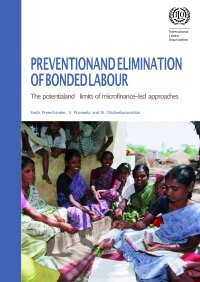By Smita Premchander, V. Prameela and M. Chidambaranatha
Millions of South Asian women, men and children are bonded to their employers, working for little or no wages because their earnings are retained in part or full to repay an outstanding loan. Many still work in agriculture, although bonded labourers are increasingly found in other sectors, including mining, brick making, textiles and domestic service. The victims of bonded labour tend to be drawn from the poorest and least educated segments of the population, from low castes and religious minorities – those who are vulnerable, excluded and voiceless. Bondage often begins when a worker takes a loan or salary advance from his or her employer to pay for a large expense, perhaps a religious ceremony, a wedding or a medical bill. Or the advance may come from a labour contractor who finds employment for migrant workers in distant areas. Then the debtor, and frequently other family members, is obliged to work for the employer or contractor for reduced wages until the debt is repaid. Additional loans are taken out to meet essential needs and the debt mounts, creating a perpetual cycle of over‐indebtedness and exploitation. Ever larger debts strengthen the employer’s control to the point where basic freedoms are denied to the whole household; the debt can even be passed down to the next generation.
Geneva, SWIT: International Labour Organization, 2014. 78p.


